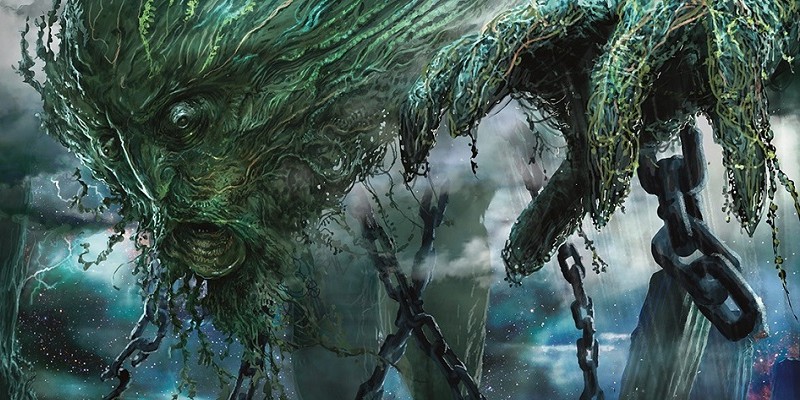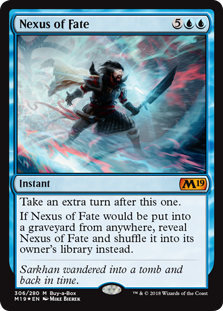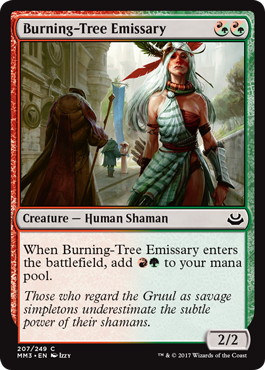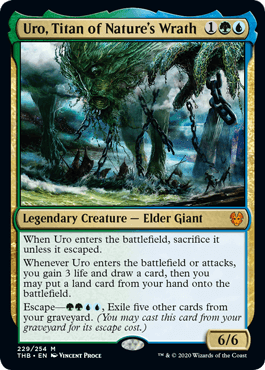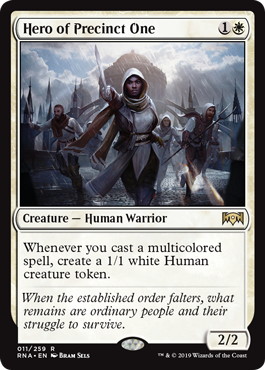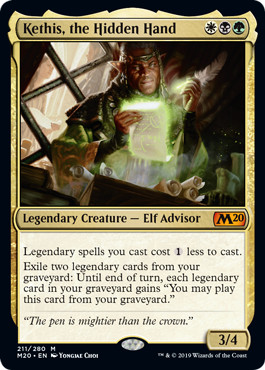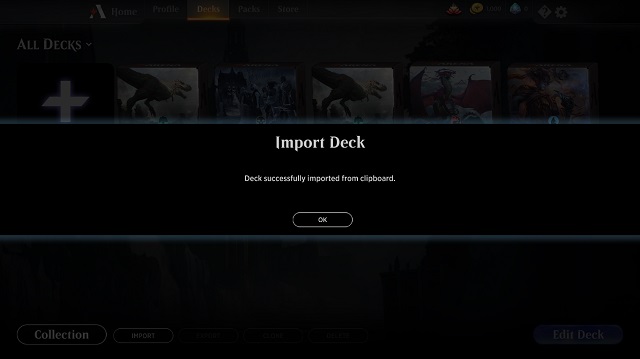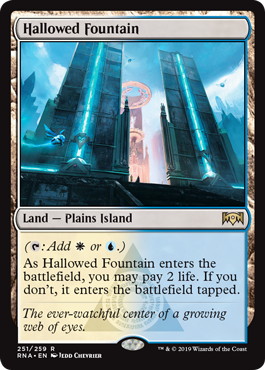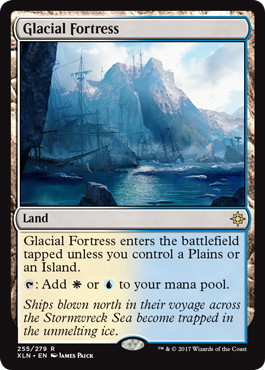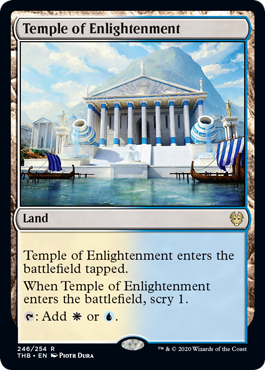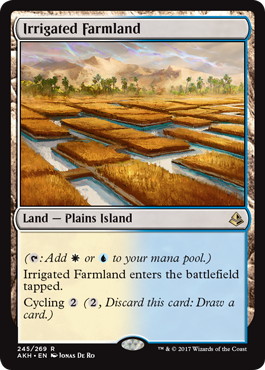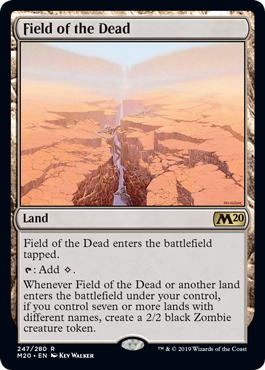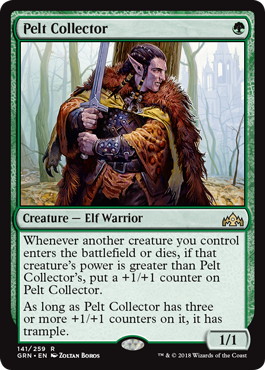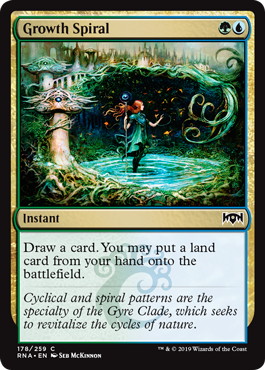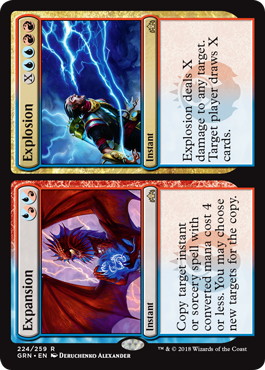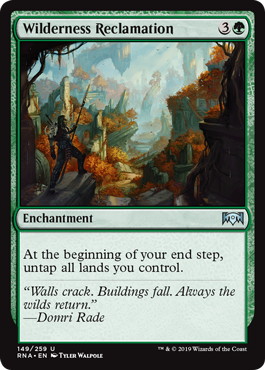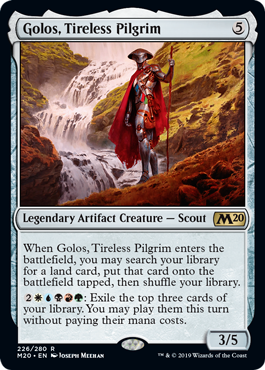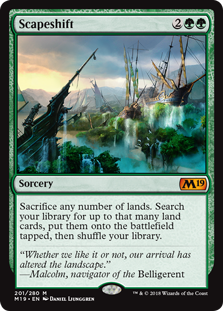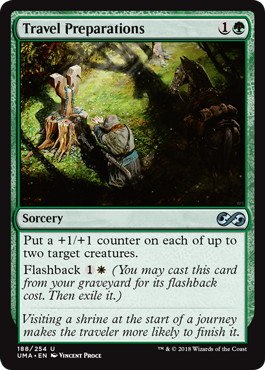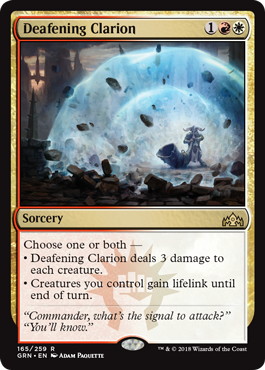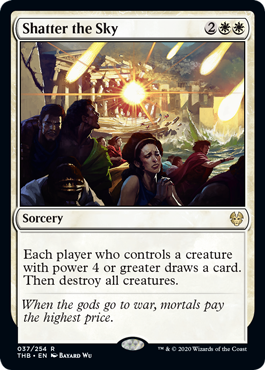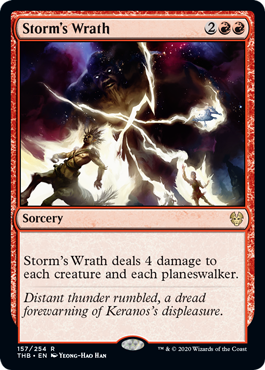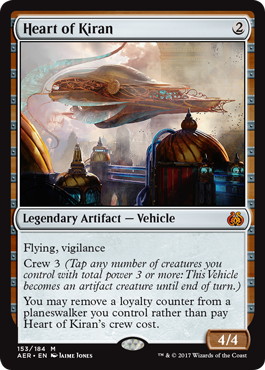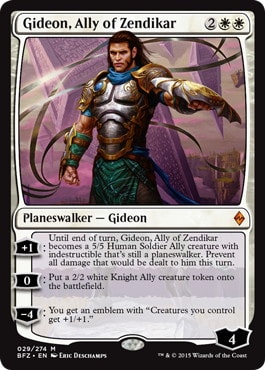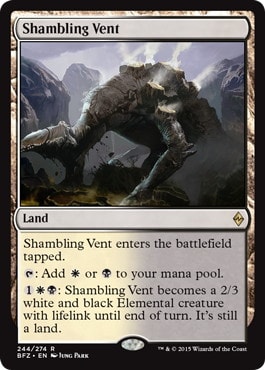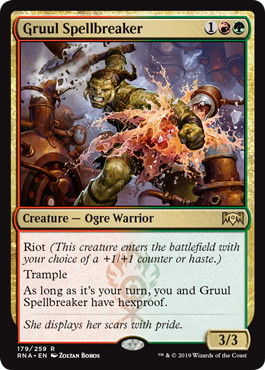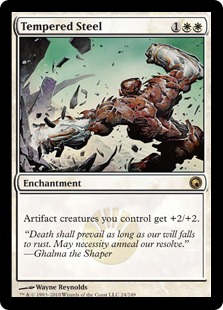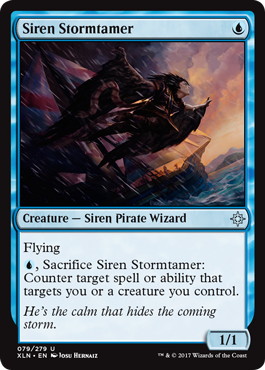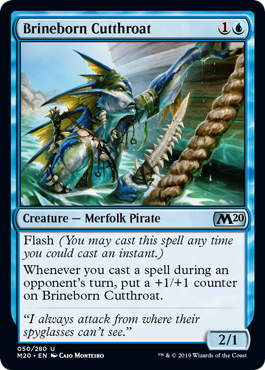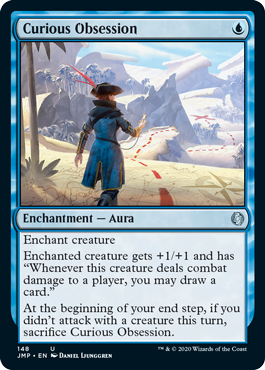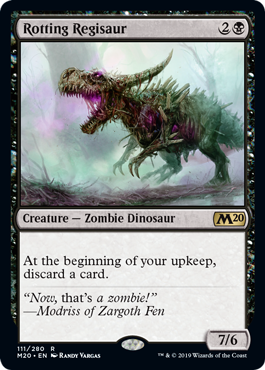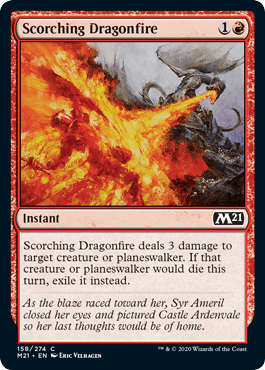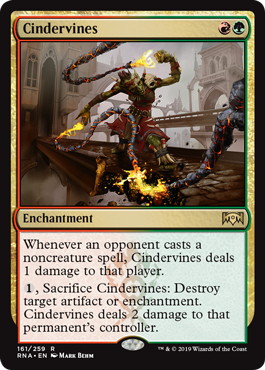Introduction
Hi,
I am Lucas Esper Berthoud, a member of Hareruya Pros and former Platinum Pro.
Eternal formats start to look cool and find an identity when players find unexpected interactions between cards from different eras. We are not there yet with Historic, the format of the upcoming Mythic Invitational and Arena Open in August, but there are tons of potential due to the existence of having a curated setlist (through Anthologies).
So, for now, we are mostly trying to solve for the most powerful interactions that already showed up in past Standard formats. This is still interesting, and I expect the format to have continued support as Arena needs any help it can get in fostering different formats until tournament organizers remember that Limited exists.
Today, I want to share my predictions of Historic after the 《Nexus of Fate》 banning, while also presenting a few scenarios and the supporting theory for building decks for tournaments with open decklist rules (used at the Invitational, but also widespread at all high-level tournaments), which hopefully will prove interesting even if you do not care about this specific format.
The Bans
《Nexus of Fate》 and 《Burning-Tree Emissary》 are gone.
In a previously unpublished version of this article, I wrote that 《Wilderness Reclamation》 into 《Nexus of Fate》 was the dominating late game interaction, as in it overpowered everything else others deck were trying to do after turn 4.
The release of 《Discontinuity》 put that deck over the top in the sense that it gave redundancy to the late game plan while also giving a very clean busted start against aggro when comboing with 《Uro, Titan of Nature’s Wrath》. I agree it had to go.
《Burning-Tree Emissary》 is a more puzzling decision. I did not even think it was always correct to play it in Gruul, but it was an important tool to have available when trying to race the mana acceleration decks. Since I still believe that ramp is very powerful, this ban could do more harm than good to the format.
In theory, with 《Nexus of Fate》 gone, there are other mid and late game plans available. However, I still suspect that 《Growth Spiral》 and 《Uro, Titan of Nature’s Wrath》 will still dictate what those plans are.
A great test forward if the format is interesting is if a deck like Esper Hero becomes viable. That is, does the format allow a non-aggro deck that can sidestep mana acceleration and plays a more interactive strategy?
Another approach that would be cool is if combo decks like 《Kethis, the Hidden Hand》 combo and 《Song of Creation》 can show up from time to time:
4C 《Kethis, the Hidden Hand》
- Lucas Esper Berthoud
- – 4C 《Kethis, the Hidden Hand》
- Sample List
- (Historic)
4 《Indatha Triome》
2 《Zagoth Triome》
4 《Watery Grave》
3 《Hallowed Fountain》
3 《Temple Garden》
2 《Breeding Pool》
1 《Godless Shrine》
2 《Hinterland Harbor》
1 《Drowned Catacomb》
1 《Glacial Fortress》
-Land (24)- 4 《Diligent Excavator》
4 《Fblthp, the Lost》
4 《Lazav, the Multifarious》
4 《Emry, Lurker of the Loch》
4 《Kethis, the Hidden Hand》
2 《Uro, Titan of Nature’s Wrath》
-Creature (22)-
4 《Mox Amber》
4 《Teferi, Time Raveler》
3 《Tamiyo, Collector of Tales》
1 《Jace, Wielder of Mysteries》
-Spell (14)-
Mana in Historic
There is the combo of Shocklands (ex: 《Hallowed Fountain》) and Checklands (ex: 《Glacial Fortress》) to allow any three-color or four-color midrange deck to be viable without too much trouble, like Esper Hero and 《Kethis, the Hidden Hand》 decks from last year.
Two-color midrange decks get to enjoy the consistency from running Temples (ex: 《Temple of Enlightenment》) and Cycling Lands (ex: 《Irrigated Farmland》), which is a real trade-off to another color.
You can also play 《Field of the Dead》 and have enough different lands to support multiple colors alongside it. So far, all good.
Where mana becomes a real constraint is for aggro decks. You cannot consistently run 1-drops from different colors outside of the tribal support from 《Tournament Grounds》 or 《Unclaimed Territory》, which are still lacking in options.
So two-color aggro decks like Gruul Aggro need to choose a primary color for their 1-drops of choice, while the secondary color will not support double costs early. In other words, Gruul Aggro is not ideally set up to run 《Pelt Collector》 and 《Embercleave》, and yet they really want both in order to stay competitive against slower decks.
Gruul Aggro
- Gruul Aggro
- – fireshoes
- Sample List
- (Historic)
7 《Mountain》
4 《Stomping Ground》
4 《Rootbound Crag》
-Land (25)- 4 《Llanowar Elves》
4 《Pelt Collector》
3 《Scavenging Ooze》
4 《Bonecrusher Giant》
4 《Gruul Spellbreaker》
4 《Lovestruck Beast》
4 《Questing Beast》
2 《Elder Gargaroth》
-Creature (29)-
3 《Redcap Melee》
2 《Heroic Intervention》
2 《Lava Coil》
2 《Soul Sear》
2 《Storm’s Wrath》
-Sideboard (15)-
A consequence of those mana requirements is that two-color decks tend to be heavier on the overall number of lands, which leads to them being more midrangey and less all-in, like the list above.
The true hyper aggro decks of the format lean towards being mono color, with Red, White, and Green being viable due to the number of 1-drops available. Mono blue is also heavily played.
Tempered Steel
- SaffronOlive
- – Tempered Steel
- Sample List
- (Historic)
4 《Zhalfirin Void》
-Land (20)- 4 《Ornithopter》
4 《Stonecoil Serpent》
4 《Gingerbrute》
4 《Inquisitive Puppet》
4 《Locthwain Gargoyle》
4 《Sparring Construct》
4 《Steel Overseer》
2 《Voltaic Servant》
-Creature (30)-
4 《Glass Casket》
3 《Thalia, Guardian of Thraben》
2 《Unbreakable Formation》
2 《Sorcerous Spyglass》
-Sideboard (15)-
Keys to the Format Moving Forward
《Growth Spiral》 and 《Uro, Titan of Nature’s Wrath》 can lead to different late game plans that all play somewhat similarly: ramp into 《Ugin, the Spirit Dragon》, into 《Field of the Dead》/《Scapeshift》, or into 《Expansion/Explosion》. That is, accelerate into a bomb while being super consistent about it because your acceleration cards are also digging through your deck.
I am not sure which of those late-game plans is the best and will put it in the time to finding it out. I am leaning towards 《Expansion/Explosion》 at the moment, because it can also incorporate 《Wilderness Reclamation》 and 《Discontinuity》 for added synergy, with the second one being very attractive in open decklist tournaments (more on that later) and if the format moves in a direction that favor aggro decks while moving away from 《Teferi, Time Raveler》.
The 《Golos, Tireless Pilgrim》/《Scapeshift》 plan was also dominating for a long time in standard, and I see tons of potential for it to come back. A big reason for that is the ability to play 《Shatter the Sky》, a key card in open decklists.
Scapeshift
- Scapeshift
- – Lucas Esper Berthoud
- Sample List
- (Historic)
2 《Forest》
1 《Plains》
1 《Swamp》
1 《Mountain》
3 《Fabled Passage》
1 《Indatha Triome》
1 《Ketria Triome》
1 《Raugrin Triome》
2 《Breeding Pool》
1 《Hallowed Fountain》
1 《Temple Garden》
1 《Glacial Fortress》
1 《Hinterland Harbor》
1 《Sunpetal Grove》
1 《Temple of Enlightenment》
1 《Temple of Mystery》
1 《Temple of Plenty》
4 《Field of the Dead》
1 《Blast Zone》
1 《Field of Ruin》
1 《Ghost Quarter》
-Land (30)- 1 《Arboreal Grazer》
4 《Elvish Rejuvenator》
3 《Uro, Titan of Nature’s Wrath》
4 《Golos, Tireless Pilgrim》
2 《Kenrith, the Returned King》
-Creature (14)-
3 《Scapeshift》
3 《Shatter the Sky》
2 《Migration Path》
4 《Teferi, Time Raveler》
-Spell (16)-
How Open Decklists Affect Preparation
I have a theory: when a format has an overwhelmingly powerful card or interaction, the existence of both the London Mulligan and the Open Decklists rule limits the ability of the rest of the format to adapt and present counterplay.
I am not entirely sure how to articulate this. It’s more of a gut feeling based on observation, but I’ll try: i) London Mulligan allows the more powerful deck to more consistently find its “Thing”, reducing the number of games where it fizzles and is forced to compete with its secondary plans. Lots of things in magic that were powerful were kept in check by inconsistency.
Now, less so. They appear all the time and dominate more games; ii) Since Open Decklists equalizes information and allow perfect mulligan decisions, it limits the number of ways in which the metagame can find creative solutions to that “Thing”, which often relied in some sort of surprise factor.
While those factors limit how to beat the most powerful strategies, there are still measures that can improve your odds in beating them.
In my experience, there are three main scenarios one need to account for when building decks for a tournament with open decklists.
1.Have Some Outs in Your Deck That You Can Find With Strategic Mulligans
The first scenario that I want to cover is that aggro decks kind of suck. I noticed this last year. During practice, I could often build a midrange or control deck that had 30 cards dedicated to beating other slow decks, and also 4 sweeper effects. If I got paired against aggro, I had a decent chance of winning game 1 by mulliganing towards that sweeper, despite minimal attention to the matchup.
The example holds true to any narrow strategy that folds to some maindeckable card. Aggro is just the most common one and if you are an aggro player you need to be aware of this when constructing your deck.
In order for aggro decks to remain competitive under those constraints, they need different angles of attack in their maindeck. Mardu Vehicles, a deck sadly too old for Historic, would be a good example here: vehicles, planeswalkers, and creature lands meant that the deck could play a long game that was good at beating sweepers. Resilience over pure speed.
However, in current Historic format, I am afraid that the pressure being put by 《Growth Spiral》 into 《Uro, Titan of Nature’s Wrath》 forces aggro decks to a very different direction of having to play their fastest configurations. This already happened when 《Nexus of Fate》 was legal, it is just a matter of figuring out if the other bombs that players will be accelerating into will also have the same effect.
Take the Gruul Aggro or the 《Tempered Steel》 deck. They are popular and all data seems to indicate they perform extremely well on the ladder. But on tournament setting, the reactive decks have a massive strategic advantage game 1 simply by mulliganing into 《Shatter the Sky》 or mulliganing away from their slowest hands.
If I am playing a ramp deck, I would not know at the moment exactly how mana slots I need to dedicate to beating those aggro decks, but I imagine it would not be hard to figure out after playtesting. It is all matter of fitting enough sweepers in the maindeck and mulliganing aggressively.
I do not need to overwhelmingly beat aggro with my maindeck, I just need to find a reasonable compromise and then I can fix it further with sideboarding. The point is that overall, this will not take too many slots, so I can focus the rest of my deck in improving synergies and maximizing raw power over interaction.
The current aggro deck that can circumvent this would be Mono Blue and I think it is an interesting choice to work on. While it does not fold to a single card, it still gets hurt if the opponent can move mulligan away their slowest hands.
Another interesting consequence here is that any deck that has access to a nut draw or combo kill will always have a reasonable floor in how bad a matchup can be – if you don’t like your pairing, try to gamble into finding that nut draw after a mulligan or two.
Thus, those decks are much more powerful in open list rules and why I think 《Kethis, the Hidden Hand》 can make a comeback in the format. This also means that if you are playing an aggro deck, even if you want to diversify your plans, you still needed to consistently reach a fast kill against that approach.
2. Diversify Sideboard Threats and Make Them Guess
The second scenario is that it is much harder to rely on a single surprise with your sideboard choices when trying to overcome a bad matchup. Notably, it is hard to depend on a hard-to-answer threat as your main sideboard plan.
For example, in the last Standard format, our Jund Sacrifice deck was doing well on the ladder against Temur Reclamation on the strength of 《Rotting Regisaur》, a creature difficult to be killed by red damage spells.
While Temur already had the tools to deal with 《Rotting Regisaur》 in their lists (《Brazen Borrower》 and extra 《Expansion/Explosion》 to copy 《Scorching Dragonfire》), those were not cards they would necessarily have against Jund after sideboard because of the threat of 《Cindervines》. We were counting on that one game were they sideboarded wrong to be enough to tip the match over.
This would not work as well with open decklists. The ideal sideboards here should rely on having multiple plans that create mismatches and then you hope they overreact despite having perfect information. That is, if you are going to have a plan that forces your opponent into playing specific answers (like 《Brazen Borrower》 against 《Rotting Regisaur》), you need to make sure that you are also able to beat them in other ways, to at least keep them guessing.
In our past example, we would need Jund to be competitive in the games where it did not find 《Rotting Regisaur》 when they drew into their 《Brazen Borrower》. In practice, what happened that while that interaction was favorable for Jund, it was not enough to win more than 50% of games.
3. Create More Decisions for Your Opponents
The third scenario is not as critical, but it’s still good to have in mind because it costs so little: when building decks with open lists in mind, try to create as many decisions as possible for your opponents in terms of cards that they need to play around.
Having a single 《Shark Typhoon》 in your list instead of none is what will stop your opponent from freely minusing their 《Teferi, Time Raveler》. A perfect opponent would account for the exact probabilities of you having that 1 《Shark Typhoon》 and weight all the risk precisely, but in the real-world opponents will mess up this calculation quite often.
Basically, any card that would require a different play pattern from your opponent to be played around is great to have in small numbers in your list, because they can stop them from being too greedy and even force mistakes.
4. You Know Their Cards
Ah, there is a fourth bonus scenario, one that you probably knew – 《Meddling Mage》 gets better with open decklists, so things like this will never happen, sadly:
Reasonable Blind Name pic.twitter.com/8fP9DA8xQu
— Justin 'IamActuallyLvL1' Gennari (@Gennair) June 30, 2020
I really want 《Meddling Mage》 to be playable in this format, as it is an elegant roadblock against the ramp decks. The synergistic interaction between 《Meddling Mage》, 《Hero of Precinct One》, 《Thought Erasure》 (gives you extra info for 《Meddling Mage》) and 《Tyrant’s Scorn》 (flex card that can slow aggro while also protecting your mage against sorcery speed interaction) is what makes me optimistic that Esper Hero can be good again, which would do wonders to make the format more diverse.
Esper Hero
- Seth Manfield
- – Esper Hero
- Sample List
- (Historic)
1 《Island》
4 《Godless Shrine》
4 《Hallowed Fountain》
4 《Watery Grave》
4 《Drowned Catacomb》
4 《Glacial Fortress》
4 《Isolated Chapel》
-Land (26)- 4 《Hero of Precinct One》
4 《Meddling Mage》
3 《Deputy of Detention》
3 《Atris, Oracle of Half-Truths》
1 《Hostage Taker》
2 《Dream Trawler》
-Creature (17)-
3 《Tyrant’s Scorn》
3 《Oath of Kaya》
4 《Teferi, Time Raveler》
3 《Teferi, Hero of Dominaria》
-Spell (17)-
Conclusion
There is still a long road ahead in my Historic preparation, and I also believe that players have not fully grasped all the impacts of London Mulligan and open lists. I wrote about this previously when it comes down to reading your opponent, that you can find here.
I hope you cheer for me and other Hareruya players at the Mythic Invitational.
Thanks for reading,
Lucas Esper Berthoud (Twitter)


